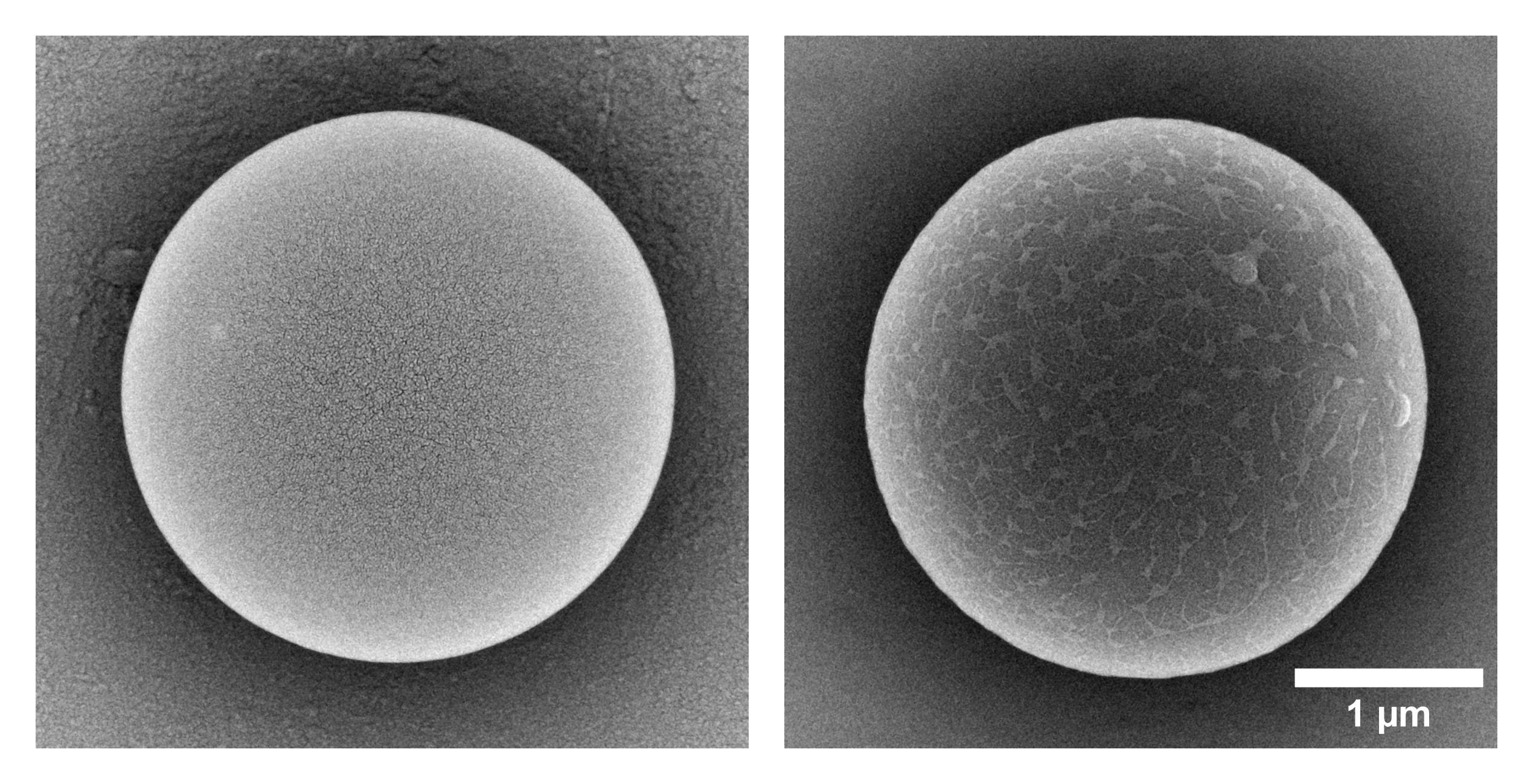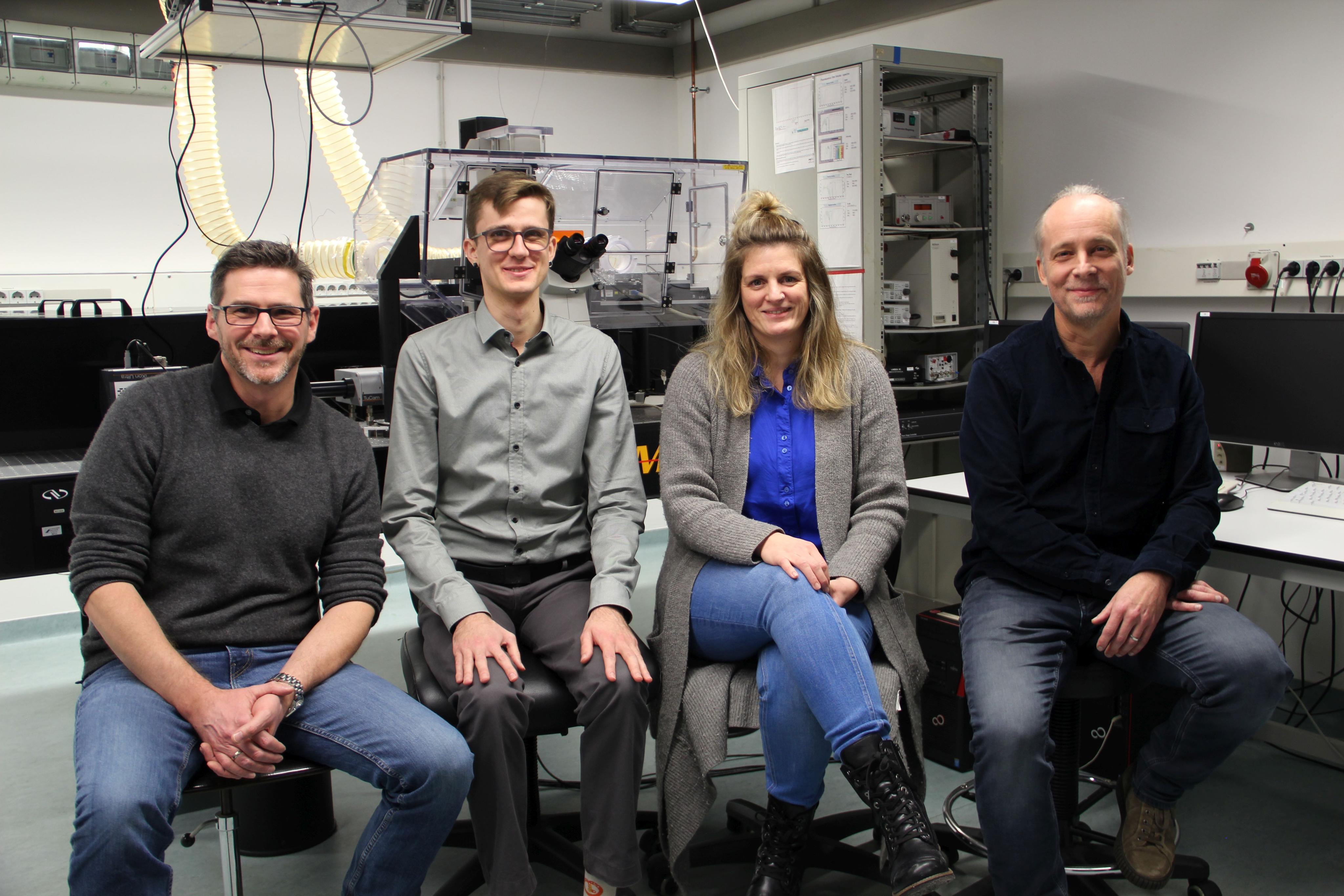Microplastics are not microplastics – physical properties matter for their interactions with cells
University of Bayreuth, Press Release No. 014/2024, 01.02.2024
New findings from a research team at the Collaborative Research Centre 1357 – Microplastics at the University of Bayreuth reveal in the journal Nature Communications that nominally identical microplastic model particles from different manufacturers differ significantly in their properties and interact differently with cells. This discovery sheds new light on research about the potential risks of microplastics, as many studies rely on such model particles.
What for?
Many studies investigating the potential effects of microplastics on cells and organisms use commercially available microplastic model particles made from polystyrene. The recent work of an interdisciplinary team of scientists from Bayreuth and Dresden has now demonstrated that these model particles vary in their properties and interactions with cells. Consequently, the scientists provide a possible explanation for why studies on the effects of microplastics often yielded seemingly contradictory results. The findings highlight the importance of thoroughly characterizing the model particles used in future research on microplastics.
Microplastics are everywhere in our environment. The oceans, rivers, soil, air – wherever researchers look for these microscopically small plastic particles, they usually find them. Therefore, microplastics have been described as contaminants of emerging concern since their ubiquity might pose a risk to organisms, ecosystems, and to human health.
Consequently, numerous studies on the potential effects of microplastics for cells, organisms, and ecosystems have been published. Often, these studies use commercially available spherical microparticles made from polystyrene as a model for microplastics. However, these studies often show contradictory results, some of them showing adverse effects whereas others do not. This discrepancy in detected effects makes it hard to assess the risks associated with microplastic particles.
An interdisciplinary research team from the Collaborative Research Centre 1357 – “Microplastics” at the University of Bayreuth and the Leibniz Institute of Polymer Research Dresden discovered that seemingly identical polystyrene microplastic particles from different manufacturers tremendously differ in their physicochemical properties. These differences are an important factor for the interactions of the microplastic particles with cells.
One important factor that was identified by the researchers was the particles’ zeta potential, which is related to the charge of a particle in a solution. Particles with a larger magnitude of the zeta potential interacted stronger with the cells. Particles that interacted stronger with cells were then internalized more efficiently into the cells.
“The interactions of microplastic particles with cells are a basis for potentially hazardous effects on organisms”, stresses Prof. Dr. Holger Kress, one of the initiators of the study. He continues: “These interactions may also determine how microplastic particles can cross biological barriers, infiltrate tissues, and distribute in the organism”.
The results of this study, which was published in the journal Nature Communications provide a possible explanation for the seemingly contradictory results of previous studies that relied on polystyrene microplastic model particles. By highlighting the strong differences between nominally identical polystyrene particles from different manufacturers, the researchers show the necessity to thoroughly characterize the physicochemical properties of the microplastic model particles in effect studies.

Two microplastic particles from different manufacturers that were examined by the research team. Although these particles are supposed to be nominally identical, they differ significantly from each other. This affects how the particles interact with cells. - © Uni Bayreuth
Prof. Dr. Christian Laforsch, spokesperson of the CRC 1357 – “Microplastics” and one of the initiators of the study emphasizes: “Microplastics are not just microplastics. Our study underlines this complexity of the microplastic problem and highlights that physicochemical properties of microplastic particles are important to understand their interactions in the environment”.
With their study, the researchers want to raise awareness about this problem in the scientific community. It’s only when the comparability of studies about the potential negative effects of microplastics is guaranteed that a reliable assessment of the risks associated with microplastic particles as well as the development of new environmentally friendly plastics becomes feasible.
Publication
Simon Wieland, Anja F. R. M. Ramsperger, Wolfgang Gross, Moritz Lehmann, Thomas Witzmann, Anja Caspari, Martin Obst, Stephan Gekle, Günter K. Auernhammer, Andreas Fery, Christian Laforsch, Holger Kress
Nominally identical microplastic models differ greatly in their particle-cell interactions
Nature Communications 15, 922 (2024)
https://doi.org/10.1038/s41467-024-45281-4
More information and downloads
- Download the team photo in high resolution
- The microscopic image in higher resolution for download
- More information on the Collaborative Research Centre Microplastics

Andreas Dietl
Collaborative Research Centre 1357 Microplastics
Public Relations and Knowledge Transfer Manager
phone: +49 (0)921 / 55-2065
e-mail: andreas.dietl@uni-bayreuth.de
web: https://www.sfb-mikroplastik.uni-bayreuth.de/en

Jennifer Opel
Deputy Press & PR Manager
phone: +49 (0)921 / 55-5357
e-mail: jennifer.opel@uni-bayreuth.de

